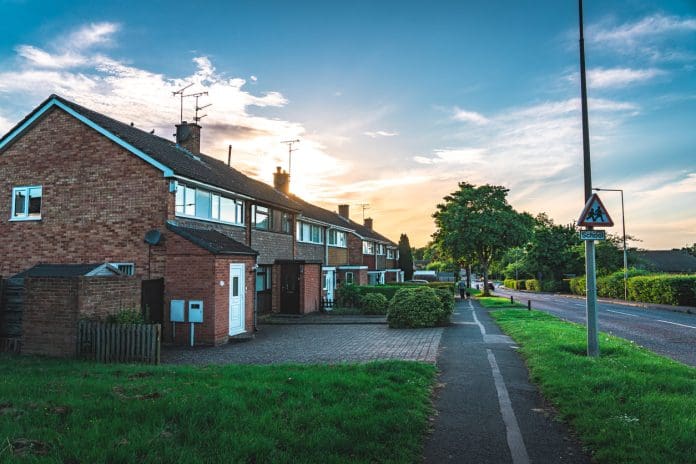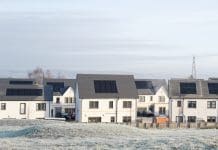A new report by law firm Shakespeare Martineau has uncovered a significant gap between social housing tenants’ desire to retrofit their homes and their ability to make those improvements. Louise Drew, partner and head of building communities, looks at the key findings
Engaging the hearts and minds of social housing tenants will be crucial for registered providers (RPs) to meet their 2050 net-zero targets. According to a recent report by law firm Shakespeare Martineau, there is a notable gap between tenants’ desire to reduce their carbon footprint and their ability to make necessary home improvements. The data highlights the importance of addressing this disconnect to retrofit homes for energy efficiency successfully.
It is clear that all homes, whether social housing or conventional, need to become greener, and given the tight deadline of 2050, many social housing tenants are not getting the improvements they need quickly enough.
The slow decarbonisation in social housing is due to multiple factors
According to the report, less than half of the tenants surveyed (46%) reported having any energy-saving technology, such as loft insulation to new windows, installed in their homes in the past two years, despite 86% of respondents expressing interest in being more involved in making efficiencies to their home.
This issue isn’t down to unwillingness by RPs, who are often as keen as their tenants to see the work done. Instead, this is due to a host of wider issues around how funding is accessed: the timescales allowed to utilise funding, the skills gap when it comes to successful installation and the technology gap, as tenants want energy-saving updates to their homes but are unsure about the process and technology available to them.
According to the data, the younger the social housing tenant is, the more likely they are to have had any retrofitting carried out on the property. Younger tenants are also more likely to have requested the installation of energy-saving technology, demonstrating that proactivity by tenants does pay off. This shows that financing issues and ambitious targets aside, RPs need to engage with tenants during the process if they are to get the job done.
Retrofitting ageing UK housing stock is necessary for a cheaper and healthier future
Nonetheless, undertaking retrofit projects is a significant challenge for the social housing sector, which owns 4.4m properties across the UK, many of which are ageing housing stock.
Retrofitting these properties is essential to reduce carbon emissions, improve energy efficiency and create a more comfortable living situation for tenants. Data back this as the research demonstrates that substandard housing costs the NHS £1.4bn a year from slips, trips and falls, and issues from drafts, dampness, and poor insulation.
The report also exposes a mismatch between what tenants want versus what they are receiving when it comes to retrofitting in social housing. The data showed the greatest demand was for new doors and windows, solar panels and heating systems. However, tenants are likelier to report that they’ve received new loft insulation, with solar panels the least likely to have been installed.
This mismatch is likely due to tenants wanting technology and products that are “visual” over fabric-first solutions hidden in lofts and walls. It’s clear that there is still more work that needs to be done to ensure the benefits of these behind-the-scenes improvements are fully understood by tenants, and this is a job for the sector as a whole.
A lack of understanding of retrofit among older tenants
The report also highlights some concerns raised by tenants regarding the retrofitting process, including timescales, communication and inconvenience, with older tenants, particularly those over 55, most likely to have concerns about understanding the process, works and technology.
Particularly when the revised directions to the Regulator of Social Housing (RSH) on tenant involvement and mutual exchange states that the government wants “to see RPs promote a flexible, varied and accessible approach to resident involvement and empowerment that works for all residents”.
This lack of understanding can often be attributed to a lack of information or knowledge, and, on average, 64% of people are unaware of the options available for retrofitting their homes. This percentage increases significantly among people aged 55 and above, to 84%.
From the point of view of the sector, one of the greatest issues is funding, with experts calling for a more joined-up approach. The survey found a need for more joined-up thinking in funding retrofit programmes and warning that, without a more holistic view of the climate, some of the most energy-efficient homes today could be prone to overheating in the future.
Retrofit in social housing must leap ahead, not play catch-up
Overall, social housing providers and their tenants often serve as the experimental grounds for the latest initiatives and technologies. While the funding and timelines for delivering these schemes through grants often pose challenges, providers are stepping up to meet them.
Despite this, the activity level still tends to be reactive rather than proactive. Without further incentives for housing providers, it could take some time before we see a shift towards a more proactive approach.

Louise Drew
Partner and head of building communities
Shakespeare Martineau
Tel: +44 (0)330 024 0333














